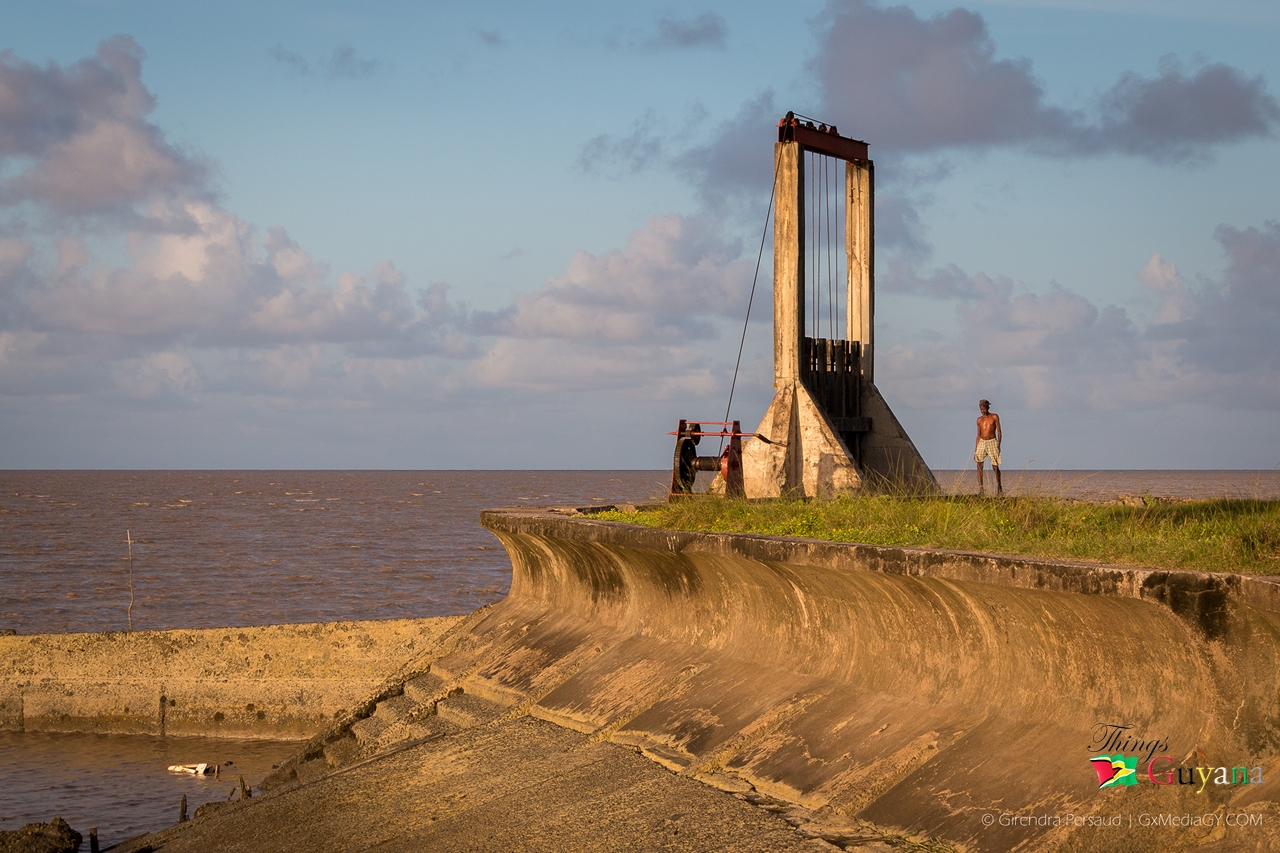Kokers are part of the sea defense system in Guyana. Since most of the coastal regions are literally under sea-level, at high tides it will be flooded. The kokers, along with the sea wall and sea dams keep the water out at high tides and is used to drain the excess water from the land at low tides. Kokers operate like gates that can be open and closed at the appropriate time.
While you think about it, here is some good history we found on the website Guyana.org
Ever since the start of Dutch colonization of Guyana, the early colonists observed that many parts of the sea coast experienced cyclical periods of erosion as well as flooding during high tides. However, since settlements were located mainly on river banks, and not along the coast, the problems of erosion and flooding were not taken seriously. But as settlements extended along the coast in the late eighteenth century, flooding of low-lying lands during high tides became a matter of concern. Also, during the periods when there was an accumulation of silt which built up the coastal plain, drainage canals were silted up and water accumulated during the rainy season was difficult to remove.
Georgetown, in the early nineteenth century, began to feel the effects of erosion and flooding. The Eve Leary area which housed the barracks of the West India Regiment was badly flooded at times, and the residents of the surrounding areas felt that the War Office in London should provide funds to build permanent sea defences. The War Office, on the other hand, insisted that it had been providing grants for sea defence works over the years to the benefit of that part of the town. As such, it stated in 1849 that the town council should take on the responsibility of sea defence, and threatened to remove the Regiment if the barracks continued to experience flooding. But this threat was never enforced event though flooding periodically occurred.
Eventually in 1855 the Combined Court voted a sum of $135,000 to erect sea defences for Georgetown.
In the meantime, a few proprietors of estates used their own resources to build earthen embankments as sea defences to protect their lands from floods during high tides. After a while, the Government realised that sea defence should not be left to the estate owners, and an effort was started by the Government to build a strong sea wall in Georgetown from Camp Street to Kitty. This wall was completed in 1882.
The Director of Public Works was given the authority to monitor the sea defences throughout the country. He could order any proprietor to use his own funds to build sea walls (or sea dams), but he could also recommend the spending of government funds to assist the estates. Loans were also made available to proprietors to erect sea defence.
To allow for easy drainage, and also to obtain irrigation water from the inland areas, each coastal plantation was established in a rectangular pattern. The front faced the river or the sea while the back had the wet savannah or a creek as its boundary. Parallel canals on the two sides ran from the back lands to the sea or river and emptied through kokers (or sluices). Smaller canals (or trenches) cut across the breadth of the plantation to connect to the main parallel canals, and the flow of water through them was also controlled by smaller kokers.
Before 1838, all of these waterways were dug by the slaves using shovels as their tools. After this period, paid African labour and Indian indentured workers carried out the excavation works. For every square mile of land which was used for sugar-cane cultivation, about 49 miles of drainage and 16 miles of irrigation trenches were dug. In the process of digging canals and trenches on the sugar plantations, over 100 million tons of earth were excavated.
The estates were drained by gravity during low tides. Those which faced the sea experienced serious drainage problems during the cyclical build-up of silt along the coast. During these periods, which lasted about seven years, the kokers (sluices) were blocked by accumulation of silt, and drainage had to be done by pumping which was very expensive.
With regard to irrigation, from the early nineteenth century, sugar estates were able to obtain water during periods of low rainfall from a natural conservancy on their southern boundary. The idea of a permanent conservancy was developed by Dr. Michael McTurk, a member of the Georgetown Town Council, and based on his plan, an Ordinance was passed in 1828 to build an earthen dam to trap water in the East Demerara conservancy.
Article Reference: Guyana.org, August 2016, http://www.guyana.org/features/guyanastory/chapter69.html
Picture: Girendra Persaud, Koker at Den Amstel, West Coast Demerara, Guyana.







